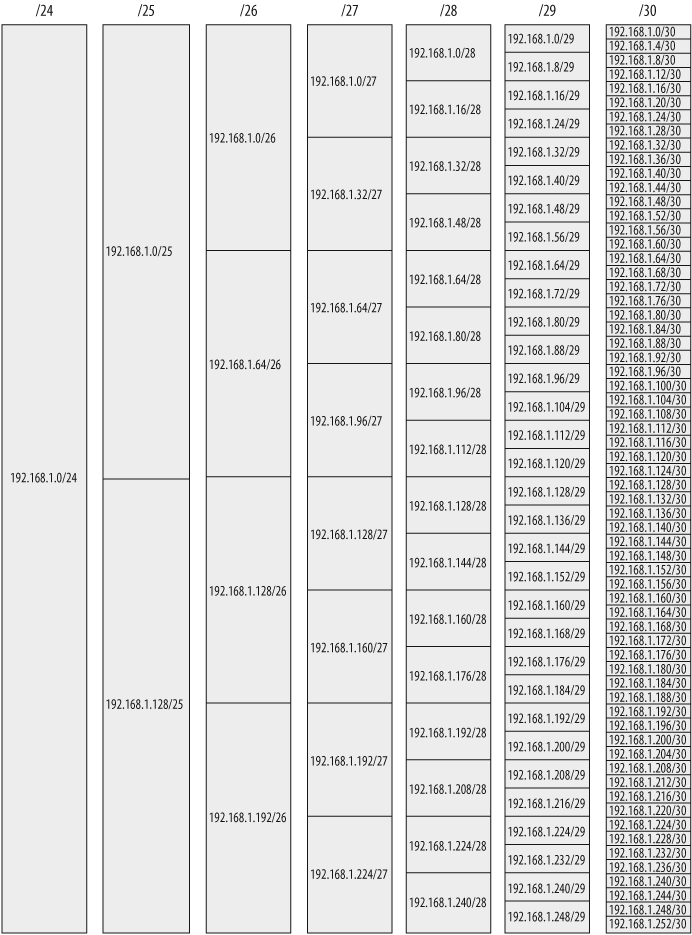VLSM
Variable Length Subnet Masking (VLSM) is the best thing to happen to IP networking since subnet masks.
In a nutshell, when using what we'll call classful subnetting rules, if a network is divided into subnets, each subnet within the classful network must be the same size. Figure 34-2 shows the ways in which a Class C network can be divided. Using the traditional classful rules, these are the only divisions possible. The reason for this is the binary nature of the subnet mask.

Figure 34-2. Classful subnets of a/24 network
When IP was developed, there were more IP addresses available than anyone could have possibly wantedâ;or so we all thought! But as the world progressed, we quickly discovered that we were running out of IP address space at an alarming rate. Some bright minds determined that if the rules of subnetting could be altered a bit, we could give ourselves some breathing room. The result was VLSM.
VLSM states that when subnetting a network, the individual subnets do not need be of equal size. The caveat is that the subnets must still follow the rules of binary; that is, they must exist where they would normally fall when subnetting using the traditional rules.
Figure 34-3 shows examples of a normally subnetted network, a proper VLSM network, and an invalid VLSM network. In the invalid example, the network 192.168.1.200/28 is not permitted by the rules of subnetting. ...
Get Network Warrior now with the O’Reilly learning platform.
O’Reilly members experience books, live events, courses curated by job role, and more from O’Reilly and nearly 200 top publishers.

